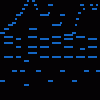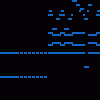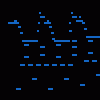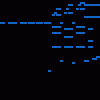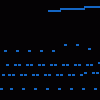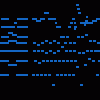Here are some of Chopin's pieces. More wll be added as I transcribe them.
#
TITLE
No comments yet
Chopin - Nocturne Op. 27 No. 1 in C# Minor
The Nocturne in C-sharp minor, referred to as Nocturne No. 7 in the context of the complete set of Chopin's Nocturnes, is initially marked larghetto and is in 4/4 meter, written as common time. It transitions to più mosso (more movement) in measure 58, along with a time signature change to 3/4 meter. The piece returns to its original tempo and meter in measure 93, and ends in an adagio beginning in measure 127. The piece is 134 measures long and written in ternary form with coda; the primary theme is introduced, followed by a secondary theme and a repetition of the first.
The opening alternates between major and minor and uses wide arpeggios, commonly found in other nocturnes as well, in the left hand; such arpeggios require a wide left hand to play smoothly. James Huneker commented that the piece is "a masterpiece" pointing to the "morbid, persistent melody" of the left hand. The più mosso uses mostly triplets in the left-hand and modulates to A♭ major in measure 68. It ends with a cadenza before transitioning back to the primary theme. For David Dubal, the più mosso has a "restless, vehement power". Huneker also likens the più mosso to a work by Beethoven due to the agitated nature of this section. The coda "reminds the listener of Chopin's seemingly inexhaustible prodigality" according to Dubal while Huneker calls it a "surprising climax followed by sunshine" before returning to the opening theme.
The opening alternates between major and minor and uses wide arpeggios, commonly found in other nocturnes as well, in the left hand; such arpeggios require a wide left hand to play smoothly. James Huneker commented that the piece is "a masterpiece" pointing to the "morbid, persistent melody" of the left hand. The più mosso uses mostly triplets in the left-hand and modulates to A♭ major in measure 68. It ends with a cadenza before transitioning back to the primary theme. For David Dubal, the più mosso has a "restless, vehement power". Huneker also likens the più mosso to a work by Beethoven due to the agitated nature of this section. The coda "reminds the listener of Chopin's seemingly inexhaustible prodigality" according to Dubal while Huneker calls it a "surprising climax followed by sunshine" before returning to the opening theme.
Comments
No comments yet
Link to this sequence: 3939801
Simple
Advanced
Synthesizer
Instrument name
Copy
Load
Clone
Delete
Mute
Solo
Reset
Volume
Delay
Panning
Detune
Reverb
Distort
Equalizer
High
Mid
Low
Bitcrusher
Synth name
Resonance (Q)
LFO
1/4
Envelope
A
D
S
R
Edit Markers
Settings
BPM
Title
Instrument
- Select/deselect notes
- Select/deselect markers
- Save a copy
- Save offline
- Export MP3
- Export WAV
- Export MIDI
- Import MIDI/Sequence File
- Fast graphics
- Invert
- Minor ⇄ Major
- Reverse Selection
- Humanize Selection
- Legatomize Selection
- Fade In Selection
- Fade Out Selection
- Stretch Selection
0
Connect a MIDI keyboard.
Record keyboard and MIDI inputs.
Snap recorded notes to the grid.
Filter recorded notes using the key guide.
Play a metronome. When recording, gives a 4 beat lead in.
OnlineSequencer.net is an online music sequencer. Make tunes in your browser and share them with friends!
Made by Jacob Morgan and George Burdell
·
Hosting 4,194,554 sequences since 2013 ·
Buy us a ☕ ·
Privacy
·



